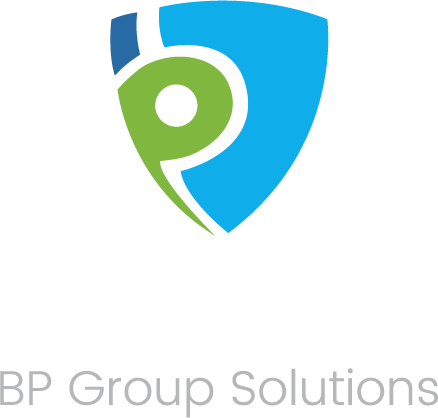Preparing for the Unexpected: Why Business Owners Need a Contingency Plan
Preparing for the Unexpected: Why Business Owners Need a Contingency Plan

In the world of business, change is the only constant. Changes can bring opportunities for growth, but they can also bring risks and potential threats to your business. One thing that can help you navigate these uncertainties is a solid contingency plan. It’s important to have a contingency plan in place, particularly to manage potential risks and ensure business continuity.
What is a Contingency Plan?
A contingency plan is a strategic plan that outlines the steps your business will take in response to an unforeseen event or emergency. Contingency planning has become more important than ever, especially considering recent global crises and uncertainties.
The Importance of a Contingency Plan

Contingency plans are pivotal to business resilience, providing several key benefits. Firstly, they help to minimize potential losses during a crisis by outlining specific steps to be taken in response.
Secondly, they provide structure during chaotic situations, reducing stress and panic and allowing for a quicker, more effective response.
Thirdly, contingency plans help reveal vulnerabilities within your business, enabling you to take preventive measures.
Finally, they offer assurance to stakeholders – including employees, customers, and investors – that your business is resilient, forward-thinking, and prepared to handle any challenge.
| Benefits of a Contingency Plan |
| Minimizes operational disruptions during a crisis |
| Reduces the stress and panic during emergencies |
| Provides a clear plan of action for employees |
| Protects the financial stability of the business |
| Enhances investor, customer, and supplier confidence in the business |
Steps to Create a Business Contingency Plan

Creating a business contingency plan requires a comprehensive understanding of your business and potential risks. It typically involves these steps:
- Risk Assessment: Identify potential internal and external risks your business could face. From the sudden departure of a key employee to a natural disaster, or an economic downturn, consider all possibilities. The severity and likelihood of these risks can vary, necessitating different types of insurance coverage, as illustrated in the table below:
| Potential Risk | Severity (Low-Medium-High) | Likelihood of Occurrence (Low-Medium-High) | Mitigating Insurance Type |
| Key Person Death | High | Low | Life Insurance |
| Key Person Critical Illness | High | Medium | Critical Illness Insurance |
| Key Person Disability | High | Medium | Disability Income Protection |
| Business Interruption due to Disability | High | Medium | Business Overhead Expense Disability Insurance |
- Impact Analysis: Understand the potential impact of each risk on your business operations. Which risks could cause the most significant disruption or damage? Understanding this will help you prioritize which situations to plan for.
- Develop Response Strategies: For each risk identified, create a strategy to manage it. This might mean avoiding the risk altogether, minimizing its potential impact, or transferring the risk to another party. This is where insurance comes into play.
- Create a Communication Plan: How will you disseminate information during a crisis? Establish a communication plan that outlines who needs to be informed and how this information will be communicated.
- Review and Update the Plan: Continually review and update your contingency plan. Business environments are dynamic, and so your plan must be updated regularly to reflect any changes.
The Role of Insurance in a Solid Contingency Plan

Different types of insurance can play a significant role in your business contingency plan. By transferring some of the financial risks associated with unexpected events, insurance provides a safety net for your business. The Insurance Bureau of Canada provides an excellent resource explaining the various types of business insurance coverage, which include life insurance, critical illness insurance, disability insurance, and business overhead expense insurance.
For example, life insurance, critical illness insurance, and disability income protection can provide much-needed financial support in the event of the death or incapacitation of a key employee. This is especially crucial for small businesses, where the loss of a key individual can have a significant impact on operations.
Business overhead expense disability insurance is another valuable tool in your arsenal. This type of coverage can help pay for your fixed operating costs if a critical team member is temporarily unable to work due to disability. It provides financial relief during challenging times, helping to keep your business afloat.
There are also specialized insurance products that could provide significant protection for your business. For instance, environmental liability insurance can cover damages related to pollution incidents, while cyber liability insurance can protect against losses resulting from data breaches or other cyber events.
These insurance types can all be part of a sound contingency plan. Each offers a safety net that can help your business navigate through difficult times. Understanding which insurance type is most suitable for your business needs can be pivotal for your contingency planning.
Here’s a comparison of the various insurance types mentioned:
| Insurance Type | What It Covers | Ideal For |
| Life Insurance | Provides a payout in the event of the insured person’s death | Businesses that rely heavily on one or a few key individuals |
| Critical Illness Insurance | Offers a lump sum payout if the insured is diagnosed with a critical illness | Businesses seeking to protect their key individuals and financial stability |
| Disability Income Protection | Provides a monthly income if the insured is unable to work due to injury or illness | Individuals and businesses wanting to protect income stream |
| Business Overhead Expense Disability Insurance | Covers a company’s fixed operating expenses for a specified period if a key person becomes disabled | Businesses aiming to secure their operational expenses |
Statistics Canada notes that many small businesses lack contingency plans, but the need for such planning has been underscored by the recent COVID-19 pandemic.
Types of Insurance for Business Contingency

There are several types of insurance that can act as vital components of your business’s contingency plan. Let’s delve deeper into how these specific insurance offerings can bolster your contingency planning.
- Life Insurance: In many businesses, especially smaller ones, the sudden loss of a key person can destabilize operations. A life insurance policy can provide financial support in such circumstances, allowing your business to navigate the transition period more smoothly.
- Critical Illness Insurance: This insurance pays out a lump sum if the insured person is diagnosed with a critical illness. It can help cover expenses related to treatment and recovery and also compensate for any loss of income during the period of illness.
- Disability Income Protection: Disability can happen to anyone, anytime, and can dramatically impact an individual’s ability to work. Disability income protection provides a monthly income if the insured person is unable to work due to injury or illness. This can help ensure that their income and livelihood aren’t severely disrupted by unforeseen health issues.
- Business Overhead Expense Disability Insurance: If a key person in your business becomes disabled and cannot work, this insurance covers your company’s fixed operating expenses—like rent, utilities, and employee salaries—for a specified period. It provides financial relief during challenging times, helping to keep your business afloat.
Real-Life Example of Contingency Planning and Insurance in Action

To better understand the importance of a contingency plan and the role of insurance in it, consider the following example:
Suppose you own a small IT firm with 15 employees. As the founder and CEO, you are a key person in your business—your absence could significantly impact the company.
One day, you get injured in a car accident and are unable to work for several months. Fortunately, you have a contingency plan in place and disability income protection insurance. Thanks to this, you receive a monthly income to cover your personal financial needs while you are unable to work. Plus, your business overhead expense disability insurance covers your company’s operating expenses, preventing any disruption to your business operations. Your employees continue to receive their salaries, the rent and utilities are paid on time, and business goes on as usual.
This example illustrates how a contingency plan, coupled with the right insurance coverage, can help a business navigate crises smoothly and efficiently.
Leveraging BPGS’s Expertise in Your Contingency Planning

When it comes to insurance, one size doesn’t fit all. Your business is unique, and so are its insurance needs. At BPGS, we understand this. Our team is dedicated to helping you find insurance solutions that align perfectly with your contingency plan and business objectives.
We’ve been supporting businesses in Bonnyville, Cold Lake, St. Paul, and Fort McMurray, Alberta for years, with offerings like the Chamber of Commerce Group Insurance Plan.
Speaking of the Chamber of Commerce Group Insurance Plan, did you know they have a benefit that can help you with any unexpected challenges you may incur while running your business? It’s called the Chamber Plan Business Assistance Service (BAS for short).
If you’re missing any components to your contingency plan and need an immediate answer, BAS is a confidential service that provides access to professional accounting, counselling, legal and human resource experts who understand the challenges small business owners face and can provide you with quick answers.
It’s Time To Act: The Power of Preparation for Contingency Plans
As a business owner, planning for the unexpected is not just an option; it’s a necessity. Consulting with professionals like BPGS can help you understand how their services fit into your contingency planning. With the right plans and insurance products in place, your business can be prepared to face unexpected situations and ensure continued operation and growth.
Your next step? Contact BPGS today and let us help you prepare for the future.






